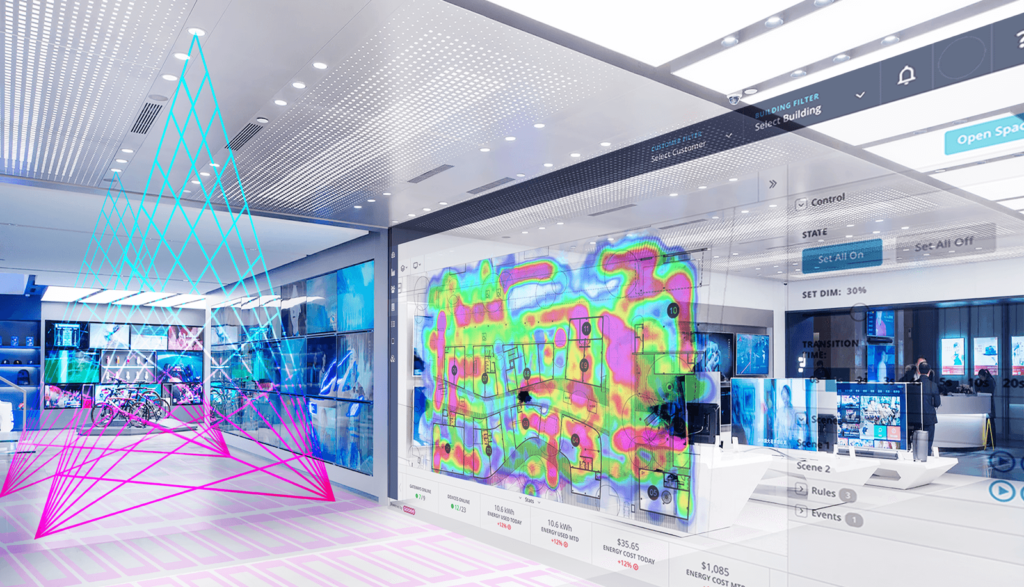
Case Study: Enhancing Healthcare with IoT and Lighting Controls at UMC Utrecht
Holders Technology has always been committed to delivering advanced lighting control solutions that enhance efficiency, energy savings, and user experience across various sectors. We are proud to be a distributor of Ingy’s smart lighting controls, recently deployed as a key part of an innovative project at University Medical Center (UMC) Utrecht. These controls played a pivotal role in the project’s success, underscoring the transformative power of integrating lighting systems with IoT technology in complex environments like hospitals.
Project Overview
UMC Utrecht initiated the UFOund project, an ambitious pilot designed to revolutionize hospital logistics through the use of Internet of Things (IoT) technology. The hospital faced a significant challenge: the frequent unavailability and misplacement of critical equipment such as beds, wheelchairs, and infusion pumps. In a hospital setting, where time is of the essence, delays in accessing essential equipment can significantly impact patient care. The UFOund project aimed to address this by creating a system that would enable medical staff to locate and access equipment quickly and efficiently, thereby improving both operational workflow and patient outcomes.
The project was spearheaded by Project Manager Wiko Lamain and Clinical Informatician Thijs Dijkgraaf, who transformed the second floor of the hospital into a testing ground for various IoT technologies. By installing network anchors and tracking tags, they created an environment where they could experiment with different setups and configurations without disrupting the daily operations of the hospital.
Challenges
The challenges faced by the UFOund project were multifaceted. In a large hospital, keeping track of the constant movement of equipment across multiple departments and wards is a daunting task. Traditional methods of tracking, such as barcodes or passive RFID tags, were considered but ultimately found to be either too limited in capability or too costly for the scale required. The project needed a solution that was not only reliable and precise but also cost-effective and scalable, given the complexity and size of the hospital environment.
Another significant challenge was ensuring that the tracking system would integrate seamlessly with existing hospital operations without adding to the already high energy demands. The system needed to be energy-efficient and capable of operating continuously without requiring frequent maintenance or battery replacements, which could disrupt hospital operations.
Lighting Controls, the Innovative Solution
The breakthrough came with the development of a robust mesh network utilizing Wirepas technology. This self-organizing network provided the foundation for real-time tracking and management of hospital assets. However, a unique and innovative solution was found in the integration of Ingy’s smart LED lighting fixtures into the network. These fixtures, which were initially installed as part of a planned LED lighting upgrade to reduce energy costs, were repurposed to serve as anchor nodes for the IoT mesh network.
This dual-purpose approach offered a cost-effective solution that not only achieved the hospital’s energy-saving goals but also provided the low-latency, reliable communication network necessary for efficient hospital logistics. The lighting fixtures, being mains-powered, removed concerns about power restrictions, making the network scalable and capable of supporting future IoT applications.
In addition to the smart lighting, the project incorporated energy-harvesting wireless switches from EnOcean. These switches required no external power source, as they generated the necessary energy through the act of pressing the button. This innovation further enhanced the hospital’s efficiency by enabling functions such as switching lights or calling for assistance without the need for additional power infrastructure.
Impact
The implementation of the UFOund project had a profound impact on the operations of UMC Utrecht. The ability to track equipment in real-time significantly reduced the time staff spent searching for essential tools, allowing them to dedicate more time to direct patient care. The integration of Ingy’s smart lighting system not only met the hospital’s energy-saving objectives but also provided a robust infrastructure for the IoT network, demonstrating a highly effective and innovative use of existing resources.
From a patient care perspective, the improvements were substantial. With the real-time tracking system, medical staff could ensure that necessary equipment was always available precisely when and where it was needed. This not only streamlined operations but also enhanced the overall patient experience by reducing delays and improving the efficiency of care delivery.
Moreover, the project’s success has paved the way for further innovations in hospital operations. The robust and scalable IoT infrastructure now in place allows for future enhancements, such as optimizing patient flow and improving nurse response times through role-based mobile alerts. These potential developments could lead to even greater efficiencies and improved outcomes in the future.
Conclusion
We are thrilled to see how products, such as Ingy’s smart lighting controls, have contributed to the success of the UFOund project at UMC Utrecht. This case study exemplifies the power of combining IoT technology with smart lighting solutions to transform hospital logistics and improve patient care. The success of this project not only highlights the versatility and effectiveness of our products but also demonstrates the significant benefits that can be achieved when innovative technology is applied to address real-world challenges in healthcare.
As we continue to support our partners with advanced lighting control technologies, we are excited to be a part of more innovative projects that push the boundaries of what is possible in healthcare and other sectors. The UFOund project is a testament to the potential of IoT and smart lighting controls to drive meaningful change, and we look forward to contributing to future initiatives that deliver similar transformative results.

